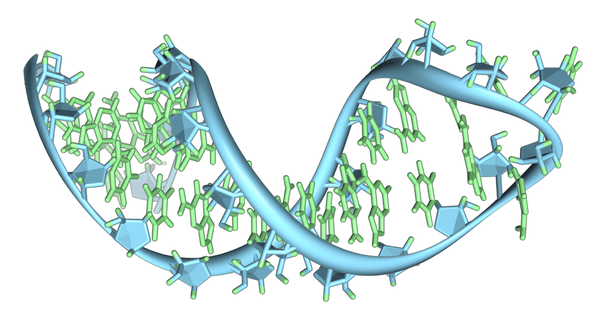|
By Ian MacArthur
In biological sciences, researchers strive to understand life through observation. Attempts to artificially create life, however, can help further our mission to understand it. A team of scientists at Massachusetts General Hospital have overcome a major barrier in the replication of genetic material inside simple, artificial cell membranes—a feat that provides researchers with foundational information about how to create a primitive synthetic cell. Inspired by the challenge of simulating how the earliest cells functioned before the biological advent of enzymes, the research team led by Dr. Jack Szostak has been studying synthetic “protocells” comprised of simple fatty acid membranes containing RNA, the molecule believed to be the first nucleic acid used by cells to store genetic information. However, a major problem has long stood in the way of successfully creating a protocell capable of RNA copying: the magnesium ions required for RNA replication to proceed also disintegrate the fatty acid membrane that houses the genetic material. Without specialized enzymes of sufficient complexity to chemically protect cell membranes while catalyzing RNA replication, the earliest cells would have had to bypass this problem another way. The Szostak team believes they have identified a way that early cells might have done this. The researchers tested the ability of several chelating agents, or molecules that bind metal ions, to protect fatty acid membranes while preserving the chemical function of magnesium ions in RNA copying. To do this, they placed RNA molecules consisting of short primer sequences attached to longer template RNA strands inside protocell membranes. The single stranded portion of the template RNA strand contained a repeated sequence of cytosine nucleotides. Because the guanine nucleotide pairs with cytosine in double stranded nucleic acids, a successful chelating agent would allow the replication of the template strand to proceed if the cells were placed in a solution containing guanine. Citrate, an anionic derivative of citric acid, was found to be the most successful chelator in facilitating RNA replication. Dr. Szostak speculated as to how the molecule may have done this: “While other molecules can protect membranes against the magnesium ion, they don’t let RNA chemistry go on. We think that citrate is able both to protect membranes and to allow RNA copying to proceed by covering only one face of the magnesium ion, protecting the membrane while allowing RNA chemistry to work.” He later noted, however, that citrate would not have been abundant enough in the primeval Earth for early cells to have utilized it for this purpose. Although citrate may not have been the solution to non-enzymatic nucleic acid replication in the early Earth, it certainly provides a solution to the problem in the laboratory. The work of Dr. Szostak and his team are part of a larger effort by scientists to replicate biological function in the lab without the use of complex enzymes and other structures. The discovery and synthesis of molecules that mimic enzyme function is a major field with important implications for medicine and pharmacology. Since many biological compounds with important functions are too complex to synthesize on a large scale, it is the task of scientists to identify simpler molecules that can serve the same purpose. While Szostak’s research is not explicitly driven to find functional substitutes for complex molecules, it nevertheless demonstrates that tasks nominally performed by enzymes can be done by simpler compounds. This demonstration alone sustains hope that man may someday successfully synthesize a functional cell, which may further elucidate our cellular history.
0 Comments
Leave a Reply. |
Categories
All
Archives
April 2024
|

